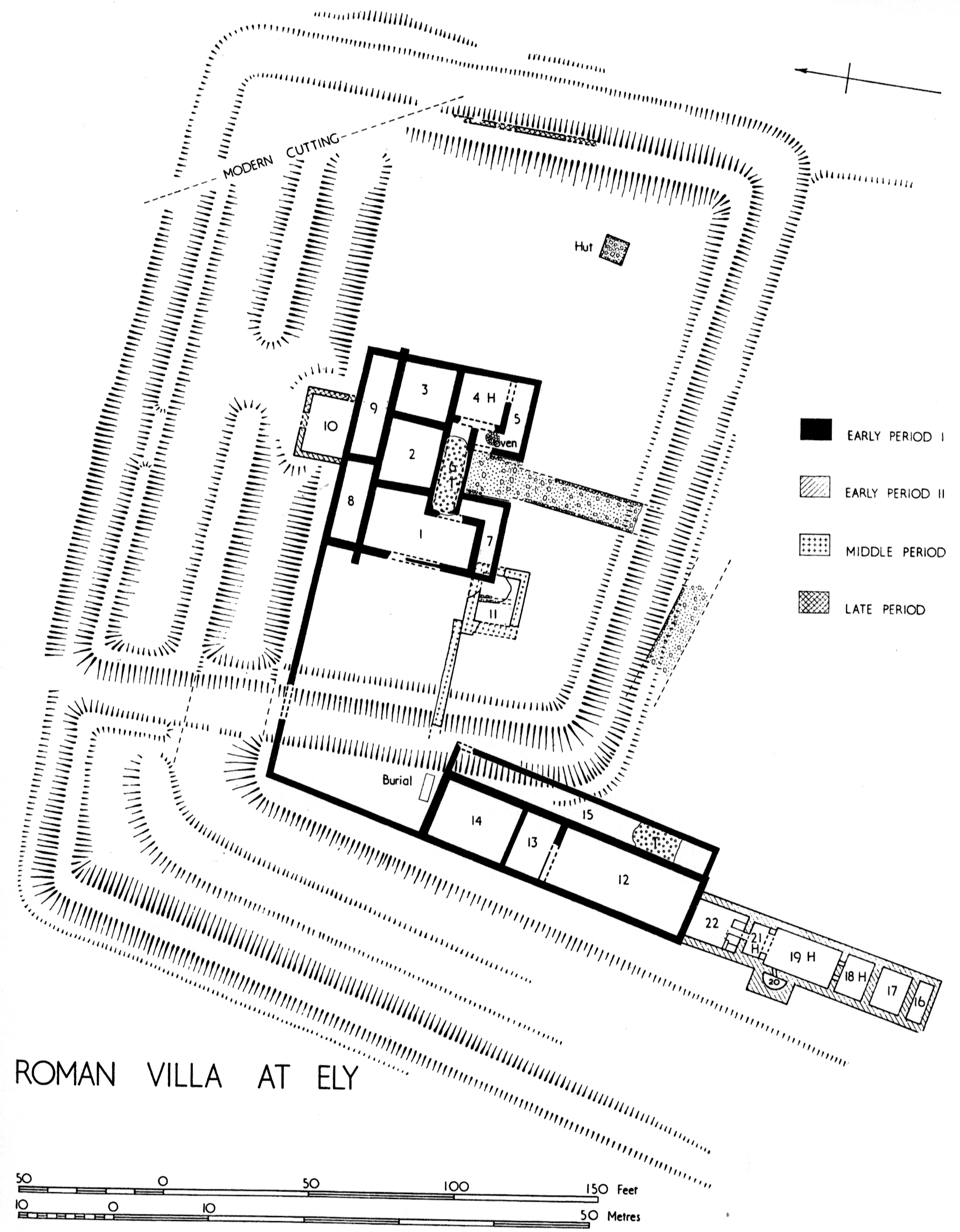Content can be downloaded for non-commercial purposes, such as for personal use or in educational resources.
For commercial purposes please contact the copyright holder directly.
Read more about the The Creative Archive Licence.
Description
Have you ever wondered why in the centre of Trelai Park is an area of rough, long grass, surrounded on all sides by football pitches? It’s actually the remains of a Roman villa about 1800 years old. It’s been the subject of archaeological investigations several times over the last 120 years. In the 1890s John Storrie, then Curator of Cardiff Museum, noticed ‘mounds’ on Ely Racecourse. He spoke to Mr George Thomas of Ely Farm who told him the mounds stood in what was formerly known as the ‘Monachlog’ – believed by himself and other old inhabitants to have been the ruins of a monastery. Storrie then led a small excavation on behalf of the Cardiff Naturalists Society and discovered the remains of wall foundations (some 2m deep), mosaic floors and coloured wall plaster of what must have been a large, richly furnished Roman house or villa, rather than a monastery.
The villa was more thoroughly excavated by the famous archaeologist Mortimer Wheeler in the 1920s. The villa had been sited on a poorly drained flood plain across which the stream Caerau Brook formerly meandered (before it was culveted during construction of the racecourse). Wheeler claimed that the villa was constructed probably in the first half of the first century AD (about AD120) and continued in use until about AD325. The villa was originally just a rectangular building, 20m by 18m with projecting wings enclosing a cobbled courtyard. However, Wheeler showed that the villa had undergone various alterations during its use including the construction of a bath house. This lavish extension however appeared to have been flooded and filled with silt soon after it was built! Something of the activities of the inhabitants was revealed – a human burial was identified and abundant traces of iron working were found, along with all the accompaniments of a well-to-do Roman family such as amphorae (for wine, fish sauce and olive oil), fine-ware pottery and window glass.
In more recent years, archaeologists from Cardiff University have undertaken a geophysical survey over the villa which showed that the buildings were surrounded by four banks and ditches some of which may represent an earlier, Iron Age enclosed settlement perhaps contemporary with the Late Iron Age occupation at Caerau Hillfort. The survey also showed the line of a Roman road leading northwards from the villa – if this line continued a straight course it would lead directly to Ely Bridge which suggests a crossing of the River Ely at this location may date back to Roman times at least.






Do you have information to add to this item? Please leave a comment
Comments (0)
You must be logged in to leave a comment